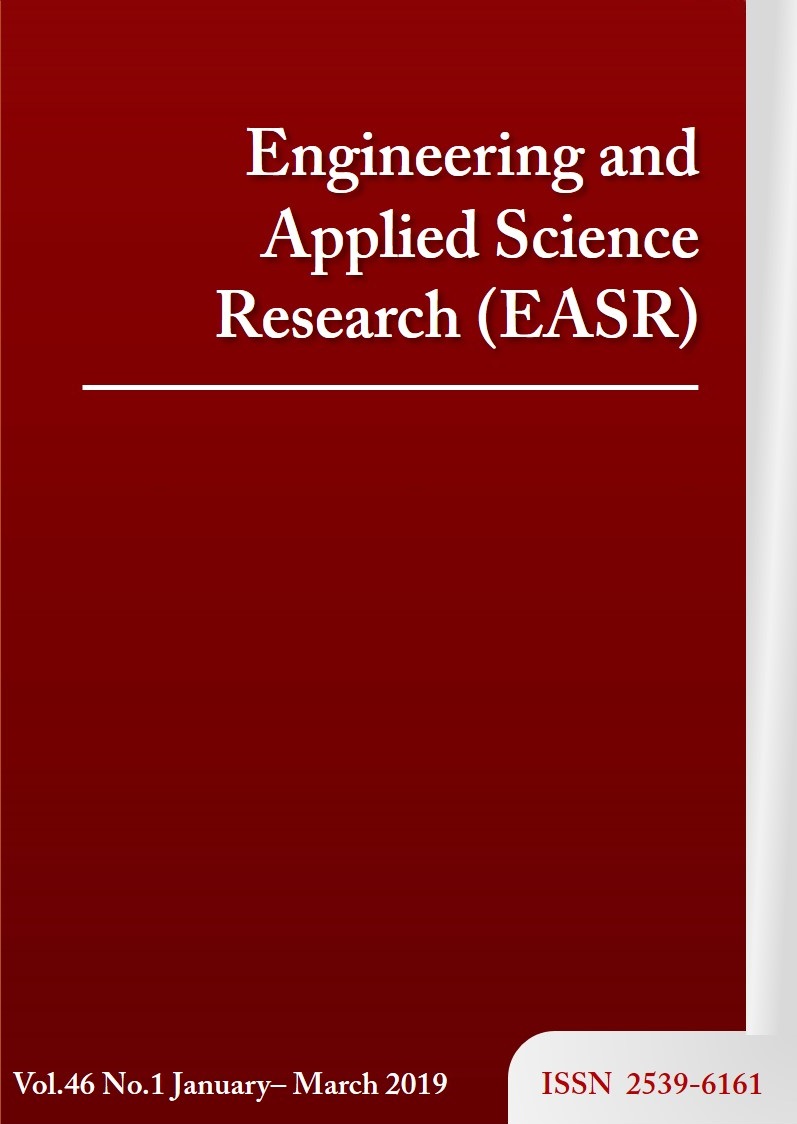A hybrid-fuzzy model with reliability-based criteria for selecting consumables used in welding dissimilar aluminum alloys joint
Main Article Content
Abstract
This study proposes a new MCDM model for the selection of the consumables (filler alloys) used in the welding of dissimilar aluminum alloy joints. The model is based on the triangular intuitionistic fuzzy hamming distance (TIFHD) and the induced triangular intuitionistic fuzzy ordered weighted geometric (I-TIFOWG) operator. It uses a value-index method to rank filler alloy alternatives and for determining the degree of flexibility in the decision-making process. The model has the following advantages: (1) the ability to capture fuzziness in the decision-making process, (2) it accounts for a degree of flexibility in the decision-making process, and, finally, (3) the method helps in reducing uncertainty in the evaluation process using the Triangular Intuitionistic Fuzzy Number(s). This allows for a more holistic and better tool for representing vague or imprecise information. In demonstrating the feasibility of the proposed model, a comparison analysis was performed. From the result of this analysis, it was observed that the model is feasible, flexible and accounts for the fuzziness in the decision-making process, as well as selecting the best filler alloy for a dissimilar aluminum weld.
Article Details
This work is licensed under a Creative Commons Attribution-NonCommercial-NoDerivatives 4.0 International License.
References
Kasman S, Kahraman F, Emiralioğlu A, Kahraman H. A case study for the welding of dissimilar EN AW 6082 and EN AW 5083 aluminum alloys by friction stir welding. Metals (Basel). 2016;7(1):1-9.
Araque O, Arzola N, Hernández E. The effect of weld reinforcement and post-welding cooling cycles on fatigue strength of butt-welded joints under cyclic tensile loading. Materials (Basel). 2018;11(4):1-19.
Wang HT, Wang GZ, Xuan FZ, Tu ST. Fracture mechanism of a dissimilar metal welded joint in nuclear power plant. Eng Fail Anal. 2013;28:134-48.
Hui J. A contribution to reliability assessment of safety-instrumented systems [thesis]. Norway: Norwegian University of Science and Technology; 2013.
Baghel PK. Nagesh DS. Multiattribute assessment of consumables for TIG welding of aluminum alloys. Int J Manuf Eng. 2016;2016:1-9.
Rao PS. Ramachandran P, Jebaraj S. Models for selecting GMA welding parameters for improving mechanical properties of weld joints. IOP Conf Ser Mater Sci Eng. 2016;114(1):1-5.
Drosos K, Kotsakis S. Influence of welding parameters on weld quality and productivity using metal cored wires [thesis]. Gothenburg, Sweden: Department of Materials and manufacturing technology, Chalmers University of technology; 2014.
Tang Z, Seefeld T, Vollertsen F. Laser brazing of aluminum with a new filler wire AlZn13Si10Cu4. Phys Procedia. 2013;41:128-36.
Singh D, Rao R. A hybrid multiple attribute decision making method for solving problems of industrial environment. Int J Ind Eng Comput. 2011;2(3):631-44.
Achebo J. Application of multi-criteria decision making optimization tool for determining mild steel weld properties and process parameters using the TOPSIS. Int J Mater Sci Appl. 2015;4(3):149-58.
Sánchez-Lozano JM, Meseguer-Valdenebro JL, Portoles A. Assessment of Arc welding process through the combination of TOPSIS–AHP methods with fuzzy logic. Trans Indian Inst Met. 2017;70(4):935-46.
Aikhuele DO, Odofin S. A generalized triangular intuitionistic fuzzy geometric averaging operator for decision-making in engineering and management. Information. 2017;8(3):1-17.
Li DF, Nan JX, Zhang MJ. A ranking method of triangular intuitionistic fuzzy numbers and application to decision making. Int J Comput Intell Syst. 2010;3(5):522-30.
Atanassov KT. Intuitionistic fuzzy sets. Fuzzy Sets Syst. 1986;20(1):87-96.
Zadeh LA. Fuzzy sets. Inf Control. 1965;8:338-53.
Li DF. A ratio ranking method of triangular intuitionistic fuzzy numbers and its application to MADM problems. Comput Math Appl. 2010; 60(6):1557-70.
Aikhuele DO. Intuitionistic fuzzy model for reliability management in wind turbine system. Appl Comput Informat. In press 2018.
Zhang X, Liu P. Method for aggregating triangular fuzzy intuitionistic fuzzy information and its application to decision making. Technol Econ Dev Econ. 2010;16(2):280-90.
Liang C, Zhao S, Zhang J. Aggregation operators on triangular intuitionistic fuzzy numbers and its application to multi-criteria decision making problems. Found Comput Decis Sci. 2014;3(2): 321-6.
Wan S, Lin LL, Dong J. MAGDM based on triangular Atanassov’s intuitionistic fuzzy information aggregation. Neural Comput Appl. 2017;28(9):2687-702.
Nan J, Wang T, An J. Intuitionistic fuzzy distance based TOPSIS method and application to MADM. Int J Fuzzy Syst Appl. 2016;5(1):10-3.


